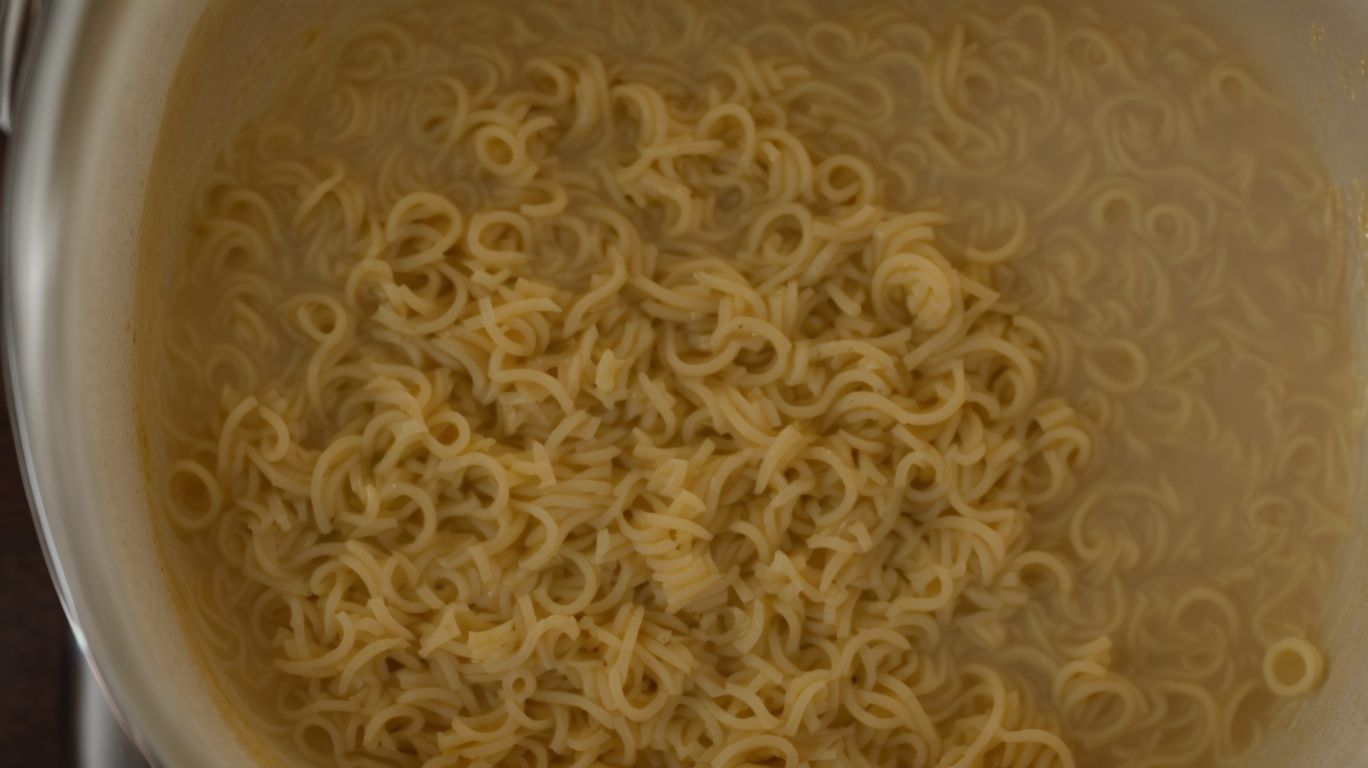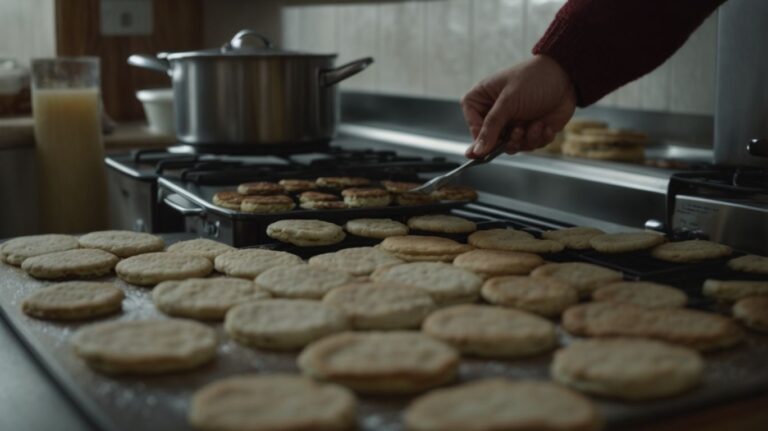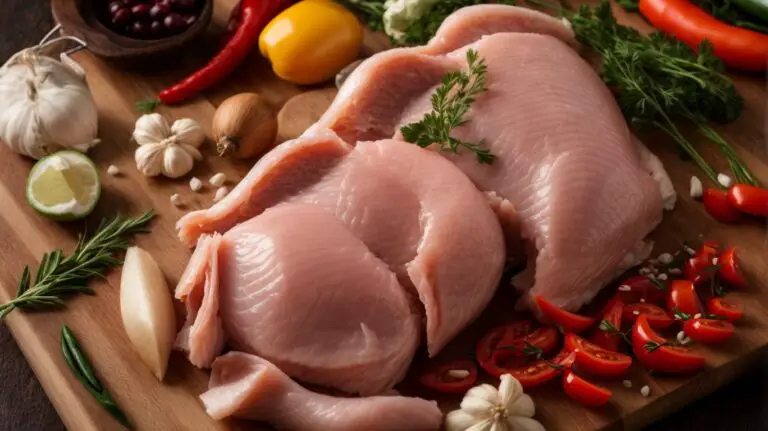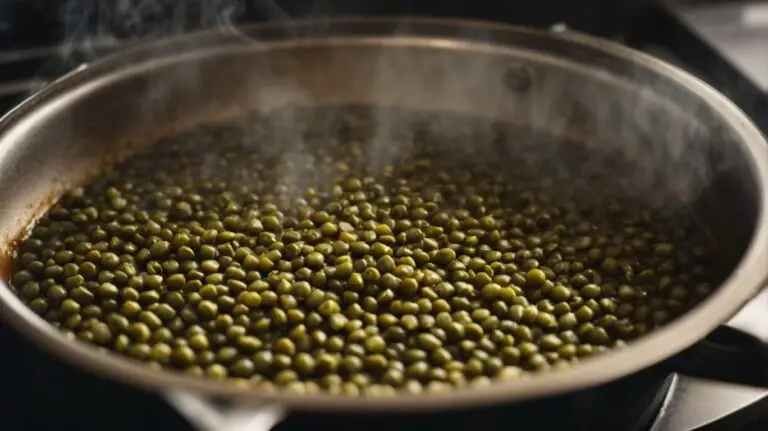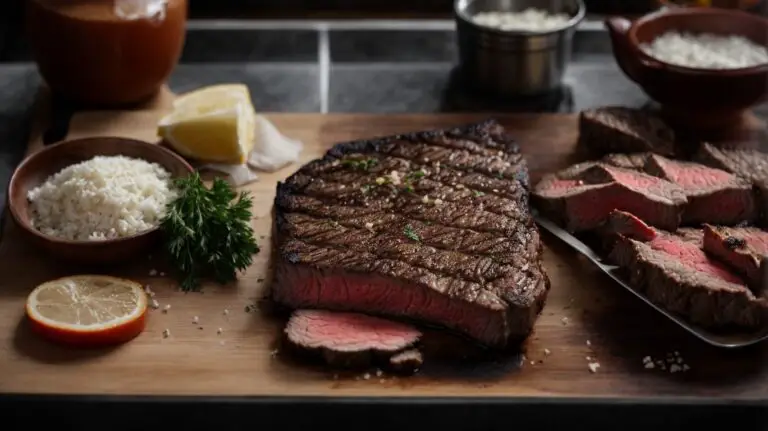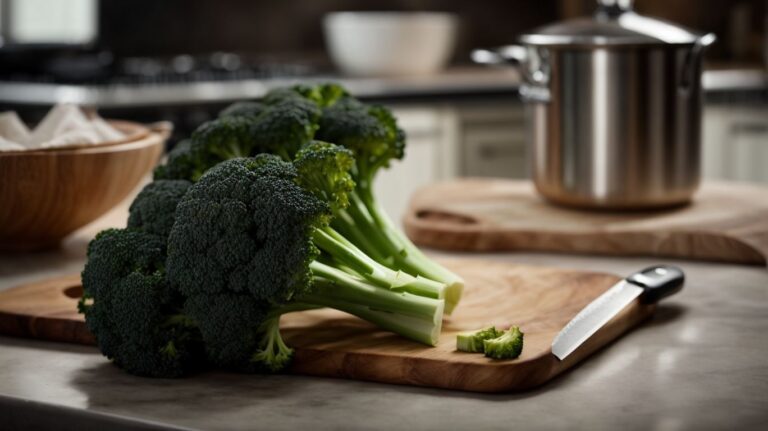How to Cook Noodles Without Sticking?
Are you tired of your noodles sticking together and ending up as a clumpy mess?
We explore the reasons why noodles stick, including the type of noodles used, cooking methods, lack of oil, and overcrowding in the pot.
Get valuable tips on preventing noodles from sticking, such as choosing the right type of noodles, using enough water, adding oil to the water, and properly preparing and draining the noodles.
Discover expert tips for cooking noodles without sticking, including using a non-stick pot, cooking in small batches, cooking at a rolling boil, and adding salt to the water.
Learn how to cook perfect noodles every time!
Key Takeaways:
Why Do Noodles Stick?
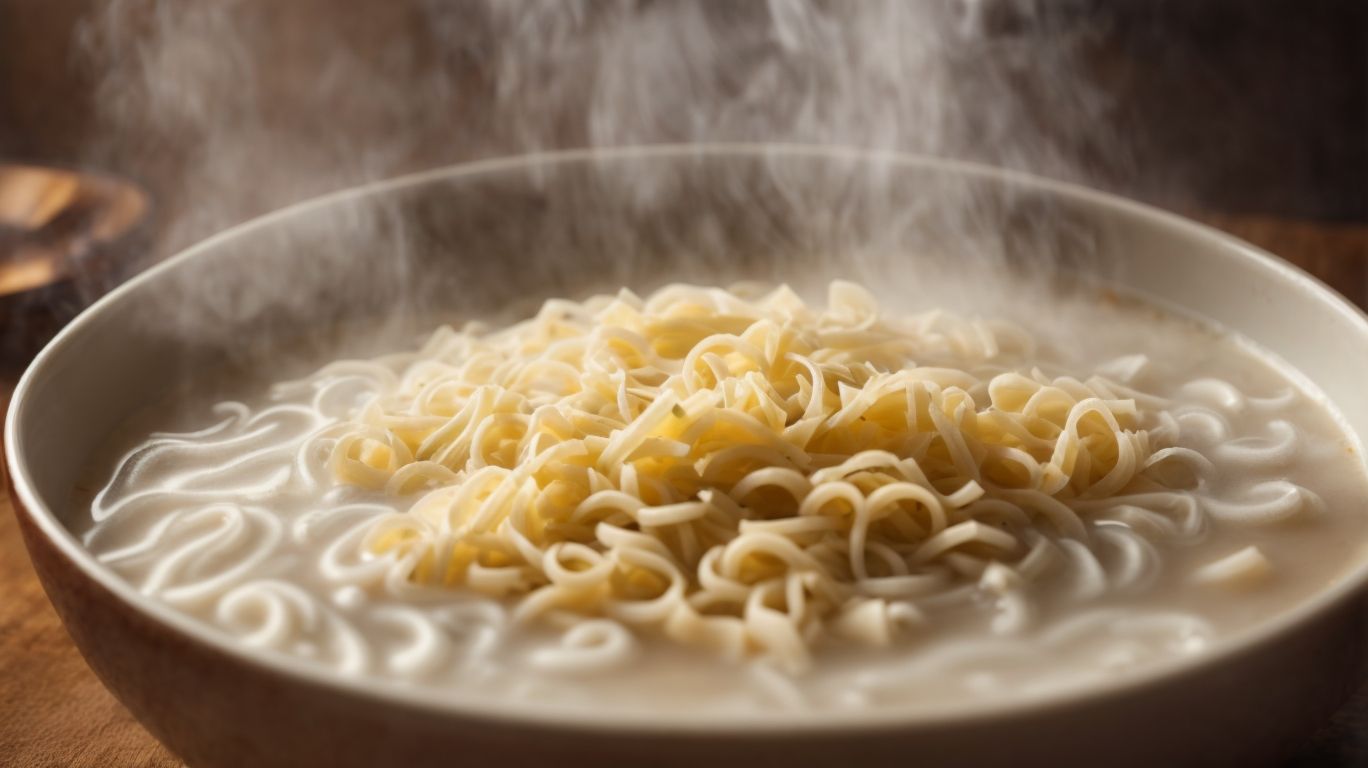
Credits: Poormet.Com – Jonathan Sanchez
Understanding why noodles stick is essential for perfecting your pasta dishes. The starch in pasta tends to make noodles stick together when not cooked properly.
When you cook pasta, the starch molecules on the surface of the noodles become activated. This starch acts like a glue, causing the noodles to clump together if they are not separated during the cooking process. The type of pasta, cooking method, and water-to-pasta ratio play crucial roles in determining how sticky your noodles will be. By selecting the right type of pasta, using an adequate amount of water, and stirring occasionally during cooking, you can prevent your noodles from sticking together.
Type of Noodles
The type of noodles you choose, such as spaghetti or fresh pasta, can significantly affect the sticking behavior during cooking.
Regarding spaghetti, its long, thin shape tends to stick together more when cooked than thicker noodles like fettuccine.
On the other hand, fresh pasta is more delicate and has a tendency to stick to itself and the pot due to its higher moisture content. This contrasts with dried pasta that requires less attention and tends to hold its shape better during cooking.
Cooking Method
The cooking method employed plays a crucial role in determining whether noodles will stick together or remain separate.
Regarding boiling noodles, using a large pot with ample water can prevent them from clumping together. Stirring occasionally during cooking ensures even heat distribution. On the other hand, steaming noodles is a method that requires less water and helps retain the nutritional value of the noodles while keeping them firm and separate. Sautéing noodles in a hot pan with oil adds a delightful crispness, preventing them from sticking together as they cook under direct heat.
Lack of Oil
The absence of oil in the cooking process can lead to noodles sticking together due to the lack of a lubricating barrier.
When oil is added to the boiling water before cooking the noodles, it plays a crucial role in creating a non-stick surface. The thin layer of oil coats each strand, preventing them from clumping or sticking together. This simple step not only ensures your noodles cook evenly but also makes it easier to separate them during and after cooking. The presence of oil adds a subtle flavor and enhances the texture of the noodles, making them more appealing to the palate.
Overcrowding in the Pot
Overcrowding the pot while boiling noodles can increase the likelihood of them sticking together due to inadequate space for proper circulation.
Higher pot sizes provide more surface area for the noodles, ensuring they are less likely to clump together during the boiling process. When there’s enough room in the pot, the noodles have sufficient space to move around freely, preventing them from sticking. It’s essential to stir the noodles occasionally to further promote even cooking and prevent them from sticking to each other. By paying attention to the pot size and noodle quantity, you can achieve perfectly cooked noodles without any unpleasant clumping.
Preventing Noodles from Sticking
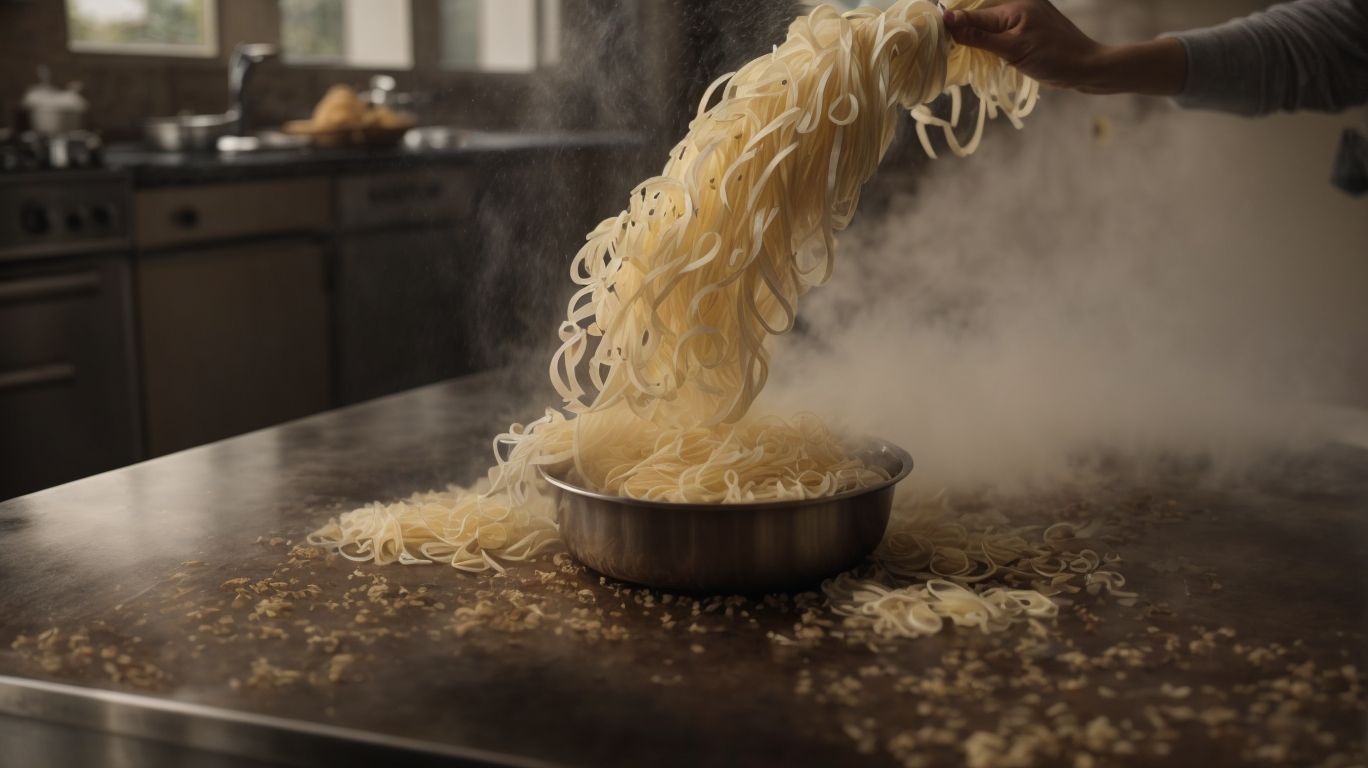
Credits: Poormet.Com – Charles Lee
Preventing noodles from sticking requires a combination of techniques such as proper stirring, adding salt to the water, and rinsing them after cooking.
When cooking noodles, make sure to stir them frequently during the boiling process to prevent clumping. This helps ensure that the noodles cook evenly and do not stick together. Adding a generous amount of salt to the boiling water can create a protective barrier around the noodles and reduce the likelihood of them sticking. After cooking, it’s essential to rinse the noodles under cold water to remove excess starch that may cause them to stick. By following these steps, you can avoid the frustration of sticky noodles and enjoy perfectly cooked pasta every time.
Choosing the Right Type of Noodles
Selecting the appropriate type of noodles is a key step in ensuring they do not stick together during cooking.
When choosing noodles, it’s essential to consider whether you prefer fresh or dried varieties. Fresh noodles, made with eggs and water, have a higher moisture content compared to dried noodles, which are traditionally made without eggs. This variance significantly impacts the stickiness level when cooking. For instance, fresh noodles tend to cook faster and can easily become sticky if not handled properly. Dried noodles, on the other hand, have a lower moisture content and typically require longer cooking times, offering a firmer texture that may be less prone to sticking.
Preparing the Noodles
Properly preparing the noodles before cooking, such as soaking them or using a specific technique, can help prevent sticking.
Soaking the noodles in water before cooking can hydrate them and soften their texture, making them less prone to clumping. Another technique to prevent stickiness is adding a few drops of oil to the boiling water before cooking the noodles. This creates a thin film around the noodles, keeping them separated as they cook. By taking these simple steps, you can ensure that your noodles turn out perfectly cooked and ready to be used in your favorite dishes.
Using Enough Water
Ensuring an adequate amount of water when cooking noodles is crucial to prevent them from sticking together in the pot.
Water quantity plays a critical role in the cooking process of noodles. Not only does it help prevent the noodles from clumping together, but it also ensures that they cook evenly. When there is insufficient water, the noodles tend to soak up all the available liquid too quickly, leading to a sticky mess. So, remember to add sufficient water to create a controlled environment where the noodles can move freely, resulting in perfectly cooked, non-sticky noodles every time.
Adding Oil to the Water
Adding oil to the water in which the noodles are boiled can create a protective layer to reduce the chances of them sticking together.
When you add oil to the pot of boiling water, it forms a thin film on the surface, which prevents the noodles from clumping or sticking. This simple trick not only ensures that your noodles come out perfectly separate and ready for your favorite sauce but also saves you time and effort in the kitchen. The oil acts as a lubricant, making it easier to drain the noodles without them sticking to the colander, ensuring a seamless cooking experience.
Stirring the Noodles
Regularly stirring the noodles during cooking helps distribute the heat evenly and prevents them from clumping together.
When you stir the noodles, you ensure that every strand receives the heat it needs to cook uniformly. This simple yet crucial step can make a significant difference in the final texture and taste of your dish. By stirring the sauce as well, you can blend all the flavors seamlessly throughout the noodles. Remember, patience is key; take your time to stir gently but consistently for best results. The effort you put into stirring will undoubtedly pay off in a delicious, perfectly cooked meal.
Draining and Rinsing the Noodles
Draining and rinsing the noodles immediately after cooking can stop the residual heat from causing them to stick together.
To properly drain and rinse your cooked noodles, start by setting up a colander in the sink. Carefully pour the noodles into the colander, allowing the hot water to drain away. Next, rinse the noodles under cold running water, using your hands to gently separate them. The cold water will help cool the noodles down quickly, halting the cooking process and preventing them from getting sticky. Once thoroughly rinsed, shake off any excess water and pat them dry if needed before incorporating them into your dish.
Tips for Cooking Noodles Without Sticking
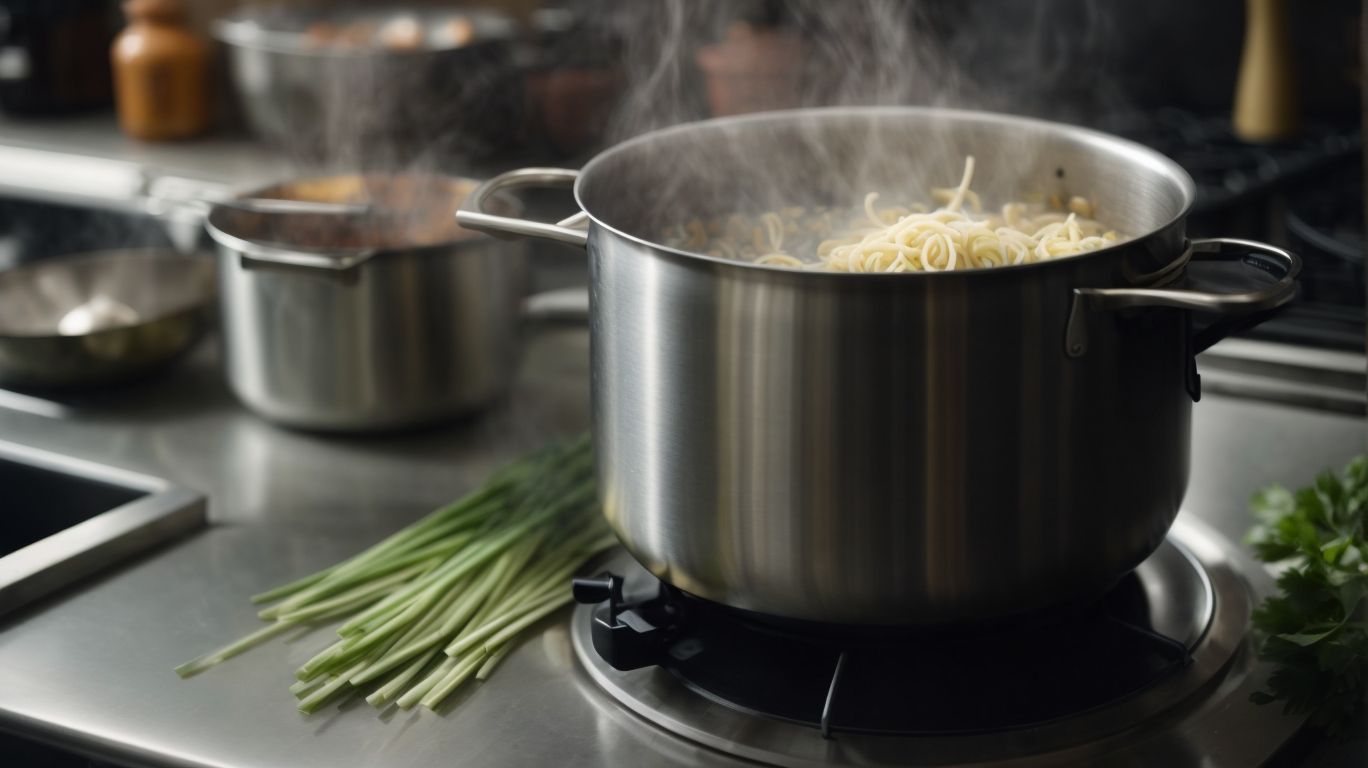
Credits: Poormet.Com – Scott Clark
Implementing specific tips such as using salt in the water and cooking in small batches can help you cook noodles without them sticking together.
When preparing a pot of boiling water for your noodles, be sure to add a generous amount of salt to the water. The salt not only adds flavor to the noodles but also helps prevent them from sticking. Stirring the noodles gently and frequently during the cooking process can further prevent them from clumping together.
Another useful technique is to cook noodles in small batches rather than overcrowding the pot. This allows each noodle to have enough space to cook evenly and independently, reducing the chances of them sticking together. Batch cooking also ensures better control over the cooking process and results in perfectly cooked noodles.
Use a Non-Stick Pot
Opting for a non-stick pot when cooking noodles can reduce the chances of them sticking to the surface, ensuring a smoother cooking process.
Using non-stick pots for noodles can make cleaning up a breeze. With their smooth surfaces, food residue is less likely to get stuck, allowing for quick and effortless washing. This convenience not only saves time in the kitchen but also promotes more frequent cooking since the cleanup is hassle-free.
Cook in Small Batches
Cooking noodles in smaller batches allows for better control over the process and reduces the likelihood of them clumping together.
This method ensures that each batch gets individual attention during the cooking process, resulting in consistently cooked noodles with the perfect texture. By cooking in smaller portions, you can also customize the level of doneness for each batch, catering to different preferences within a single meal.
Smaller batches prevent overcrowding in the pot, which can lead to uneven cooking and mushy noodles. This approach is particularly useful when preparing noodles with varying cooking times or when experimenting with different flavors and ingredients.
Cook at a Rolling Boil
Maintaining a rolling boil while cooking noodles ensures consistent heat distribution and helps prevent them from sticking together.
When water reaches a rolling boil, the bubbles are rapidly breaking the surface, which keeps the temperature of the water high and evenly distributed. This high heat is crucial for cooking noodles properly, as it ensures that they cook evenly and retain their desired texture. Without a rolling boil, noodles may cook unevenly, resulting in some parts being undercooked and sticking together. This is especially important for delicate noodles like angel hair or fresh pasta that can easily become mushy if not cooked at the right temperature.
Use a Timer
Using a timer to monitor the cooking time of noodles can prevent them from overcooking or sticking together due to prolonged exposure to heat.
Timing plays a crucial role in achieving consistently perfect noodles. By setting a timer, you ensure that your noodles are cooked to the ideal texture every time. Overcooked noodles can become mushy and lose their firmness, affecting the overall taste of your dish. In contrast, undercooked noodles can be tough and unpleasant to eat. With a timer, you can follow precise cooking instructions and avoid the guesswork, resulting in noodles that are just right – tender, yet slightly al dente.
Add Salt to the Water
Adding salt to the boiling water when cooking noodles not only enhances flavor but also helps prevent them from sticking together.
When salt is added to the boiling water, it serves as a flavor enhancer by infusing the noodles with a subtle salty taste throughout the cooking process. The salt alters the boiling point of the water, allowing the noodles to cook more evenly and retain their desired texture. The salt helps to break down the starch on the surface of the noodles, reducing the likelihood of clumping and creating a smooth, separate noodle dish. This simple yet effective trick can elevate the overall dining experience and ensure a perfect plate of noodles every time.
Use Tongs to Separate Noodles
Utilizing tongs to separate noodles while cooking or serving can help maintain their individual strands and prevent them from clustering together.
Tongs are incredibly useful not just for lifting or turning foods but also for delicately handling tender noodles. By gently guiding the strands with tongs, you can ensure they cook evenly and separately, avoiding the dreaded noodle clump that can often ruin a dish’s presentation.
Proper noodle handling with tongs becomes crucial, especially in dishes where aesthetics play a significant role. This simple tool allows you to plate noodles gracefully, ensuring a visually appealing spread that is as pleasing to the eyes as it is to the taste buds.
Frequently Asked Questions
How to Cook Noodles Without Sticking?
Answer: There are a few key tips and tricks to cooking noodles without them sticking together. Follow these simple steps for perfectly cooked, non-sticky noodles every time.
What type of noodles should I use to avoid sticking?
Answer: It’s best to use noodles with a slightly rough texture, such as egg noodles or soba noodles. These types of noodles have a surface that helps prevent them from sticking together.
Do I need to add oil to the water when boiling noodles?
Answer: Contrary to popular belief, adding oil to the boiling water will not prevent noodles from sticking. In fact, it can make them more slippery and harder to coat with sauce later on.
How can I prevent noodles from sticking together after cooking?
Answer: Once your noodles are cooked, drain them and rinse with cold water to stop the cooking process. Then, toss them with a small amount of oil to prevent them from sticking together.
What is the best way to reheat leftover noodles without them sticking?
Answer: The best way to reheat leftover noodles is to place them in a colander and run hot water over them for a few seconds. Then, heat them in a pan with a small amount of oil, stirring constantly to prevent sticking.
Can I use a non-stick pan to cook noodles without sticking?
Answer: While a non-stick pan can be helpful, it’s not necessary to cook noodles without them sticking. Following the tips above, such as using rough textured noodles and rinsing with cold water, should prevent any sticking in a regular pan.

